Viktoria Fodor
Hierarchical Federated ADMM
Sep 27, 2024



Abstract:In this paper, we depart from the widely-used gradient descent-based hierarchical federated learning (FL) algorithms to develop a novel hierarchical FL framework based on the alternating direction method of multipliers (ADMM). Within this framework, we propose two novel FL algorithms, which both use ADMM in the top layer: one that employs ADMM in the lower layer and another that uses the conventional gradient descent-based approach. The proposed framework enhances privacy, and experiments demonstrate the superiority of the proposed algorithms compared to the conventional algorithms in terms of learning convergence and accuracy. Additionally, gradient descent on the lower layer performs well even if the number of local steps is very limited, while ADMM on both layers lead to better performance otherwise.
Quantized Hierarchical Federated Learning: A Robust Approach to Statistical Heterogeneity
Mar 03, 2024Abstract:This paper presents a novel hierarchical federated learning algorithm within multiple sets that incorporates quantization for communication-efficiency and demonstrates resilience to statistical heterogeneity. Unlike conventional hierarchical federated learning algorithms, our approach combines gradient aggregation in intra-set iterations with model aggregation in inter-set iterations. We offer a comprehensive analytical framework to evaluate its optimality gap and convergence rate, comparing these aspects with those of conventional algorithms. Additionally, we develop a problem formulation to derive optimal system parameters in a closed-form solution. Our findings reveal that our algorithm consistently achieves high learning accuracy over a range of parameters and significantly outperforms other hierarchical algorithms, particularly in scenarios with heterogeneous data distributions.
Hierarchical Over-the-Air Federated Learning with Awareness of Interference and Data Heterogeneity
Jan 02, 2024

Abstract:When implementing hierarchical federated learning over wireless networks, scalability assurance and the ability to handle both interference and device data heterogeneity are crucial. This work introduces a learning method designed to address these challenges, along with a scalable transmission scheme that efficiently uses a single wireless resource through over-the-air computation. To provide resistance against data heterogeneity, we employ gradient aggregations. Meanwhile, the impact of interference is minimized through optimized receiver normalizing factors. For this, we model a multi-cluster wireless network using stochastic geometry, and characterize the mean squared error of the aggregation estimations as a function of the network parameters. We show that despite the interference and the data heterogeneity, the proposed scheme achieves high learning accuracy and can significantly outperform the conventional hierarchical algorithm.
Optimal Receive Filter Design for Misaligned Over-the-Air Computation
Sep 27, 2023
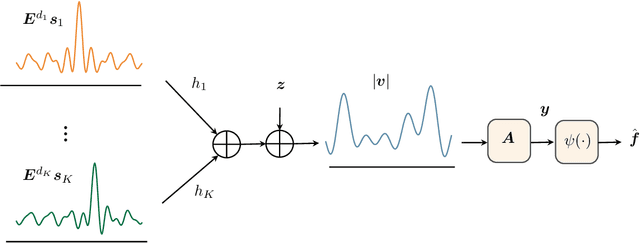
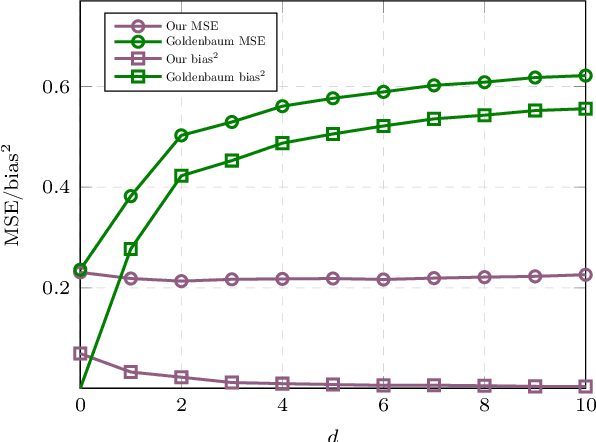
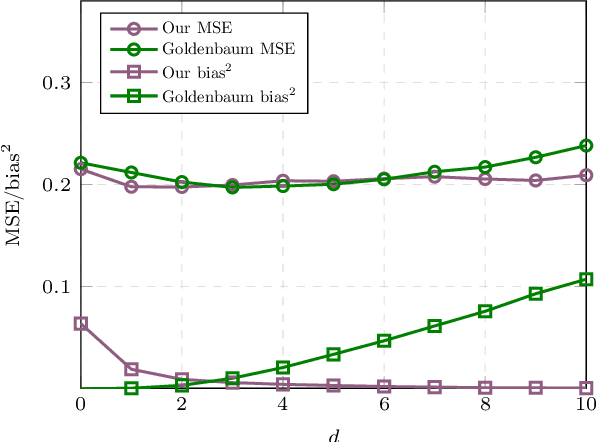
Abstract:Over-the-air computation (OAC) is a promising wireless communication method for aggregating data from many devices in dense wireless networks. The fundamental idea of OAC is to exploit signal superposition to compute functions of multiple simultaneously transmitted signals. However, the time- and phase-alignment of these superimposed signals have a significant effect on the quality of function computation. In this study, we analyze the OAC problem for a system with unknown random time delays and phase shifts. We show that the classical matched filter does not produce optimal results, and generates bias in the function estimates. To counteract this, we propose a new filter design and show that, under a bound on the maximum time delay, it is possible to achieve unbiased function computation. Additionally, we propose a Tikhonov regularization problem that produces an optimal filter given a tradeoff between the bias and noise-induced variance of the function estimates. When the time delays are long compared to the length of the transmitted pulses, our filter vastly outperforms the matched filter both in terms of bias and mean-squared error (MSE). For shorter time delays, our proposal yields similar MSE as the matched filter, while reducing the bias.
Resource Dimensioning for Single-Cell Edge Video Analytics
May 09, 2023Abstract:Edge intelligence is an emerging technology where the base stations located at the edge of the network are equipped with computing units that provide machine learning services to the end users. To provide high-quality services in a cost-efficient way, the wireless and computing resources need to be dimensioned carefully. In this paper, we address the problem of resource dimensioning in a single-cell system that supports edge video analytics under latency and accuracy constraints. We show that the resource-dimensioning problem can be transformed into a convex optimization problem, and we provide numerical results that give insights into the trade-offs between the wireless and computing resources for varying cell sizes and for varying intensity of incoming tasks. Overall, we observe that the wireless and computing resources exhibit opposite trends; the wireless resources favor from smaller cells, where high attenuation losses are avoided, and the computing resources favor from larger cells, where statistical multiplexing allows for computing more tasks. We also show that small cells with low loads have high per-request costs, even when the wireless resources are increased to compensate for the low multiplexing gain at the servers.
Multi-Server Over-the-Air Federated Learning
Nov 29, 2022



Abstract:In this work, we propose a communication-efficient two-layer federated learning algorithm for distributed setups including a core server and multiple edge servers with clusters of devices. Assuming different learning tasks, clusters with a same task collaborate. To implement the algorithm over wireless links, we propose a scalable clustered over-the-air aggregation scheme for the uplink with a bandwidth-limited broadcast scheme for the downlink that requires only two single resource blocks for each algorithm iteration, independent of the number of edge servers and devices. This setup is faced with interference of devices in the uplink and interference of edge servers in the downlink that are to be modeled rigorously. We first develop a spatial model for the setup by modeling devices as a Poisson cluster process over the edge servers and quantify uplink and downlink error terms due to the interference. Accordingly, we present a comprehensive mathematical approach to derive the convergence bound for the proposed algorithm including any number of collaborating clusters in the setup and provide important special cases and design remarks. Finally, we show that despite the interference in the proposed uplink and downlink schemes, the proposed algorithm achieves high learning accuracy for a variety of parameters.
Modelling multi-cell edge video analytics
Feb 16, 2022
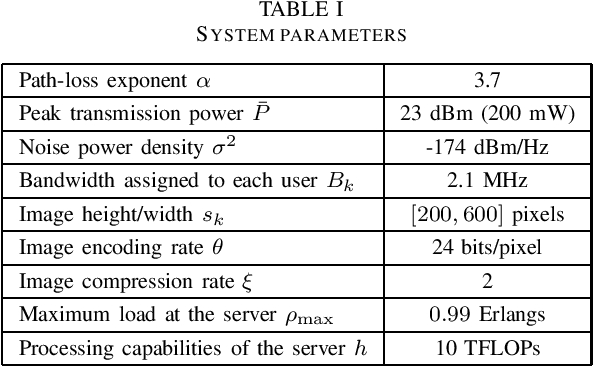
Abstract:Edge intelligence is a scalable solution for analyzing distributed data, but it cannot provide reliable services in large-scale cellular networks unless the inherent aspects of fading and interference are also taken into consideration. In this paper, we present the first mathematical framework for modelling edge video analytics in multi-cell cellular systems. We derive the expressions for the coverage probability, the ergodic capacity, the probability of successfully completing the video analytics within a target delay requirement, and the effective frame rate. We also analyze the effect of the system parameters on the accuracy of the detection algorithm, the supported frame rate at the edge server, and the system fairness.
Over-the-Air Federated Learning with Retransmissions
Nov 19, 2021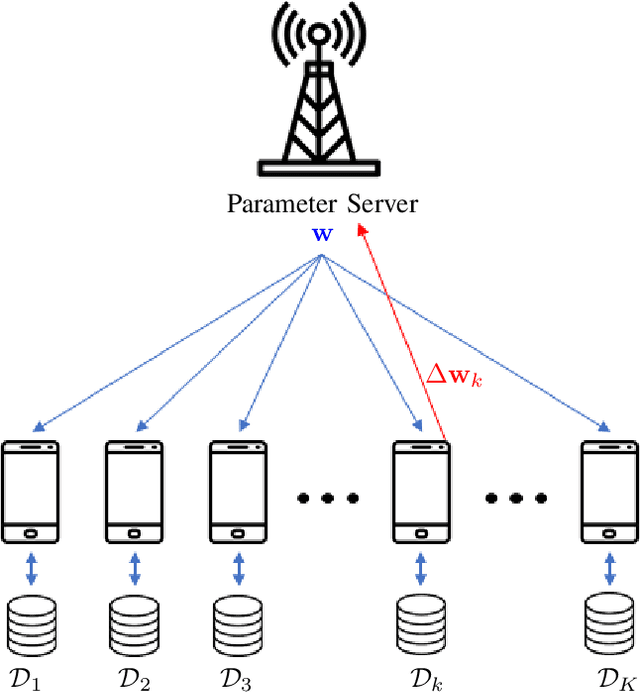
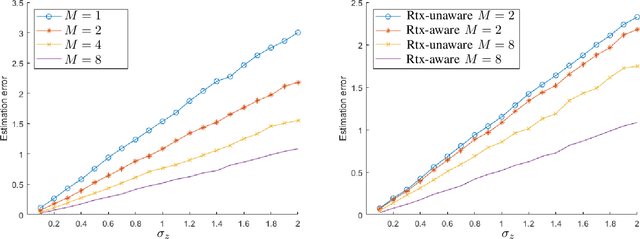
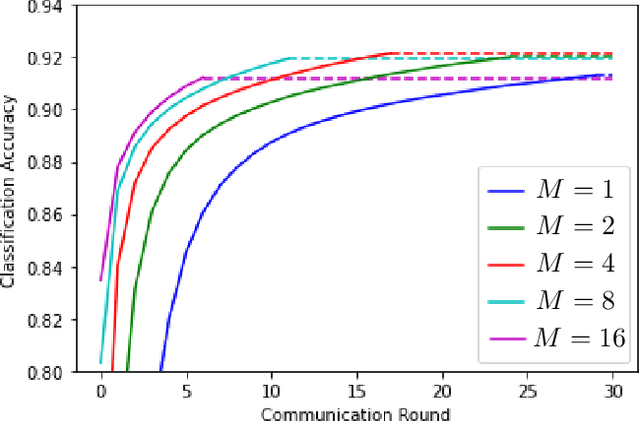
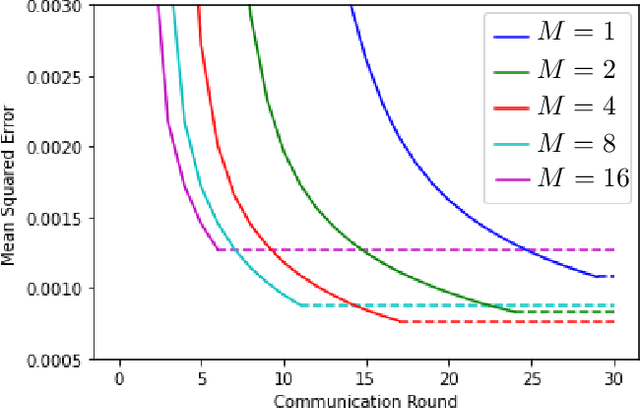
Abstract:Motivated by increasing computational capabilities of wireless devices, as well as unprecedented levels of user- and device-generated data, new distributed machine learning (ML) methods have emerged. In the wireless community, Federated Learning (FL) is of particular interest due to its communication efficiency and its ability to deal with the problem of non-IID data. FL training can be accelerated by a wireless communication method called Over-the-Air Computation (AirComp) which harnesses the interference of simultaneous uplink transmissions to efficiently aggregate model updates. However, since AirComp utilizes analog communication, it introduces inevitable estimation errors. In this paper, we study the impact of such estimation errors on the convergence of FL and propose retransmissions as a method to improve FL convergence over resource-constrained wireless networks. First, we derive the optimal AirComp power control scheme with retransmissions over static channels. Then, we investigate the performance of Over-the-Air FL with retransmissions and find two upper bounds on the FL loss function. Finally, we propose a heuristic for selecting the optimal number of retransmissions, which can be calculated before training the ML model. Numerical results demonstrate that the introduction of retransmissions can lead to improved ML performance, without incurring extra costs in terms of communication or computation. Additionally, we provide simulation results on our heuristic which indicate that it can correctly identify the optimal number of retransmissions for different wireless network setups and machine learning problems.
Wireless for Machine Learning
Sep 01, 2020
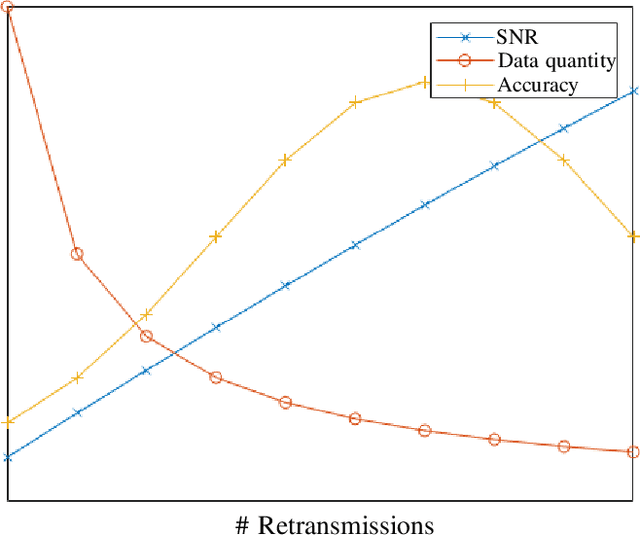
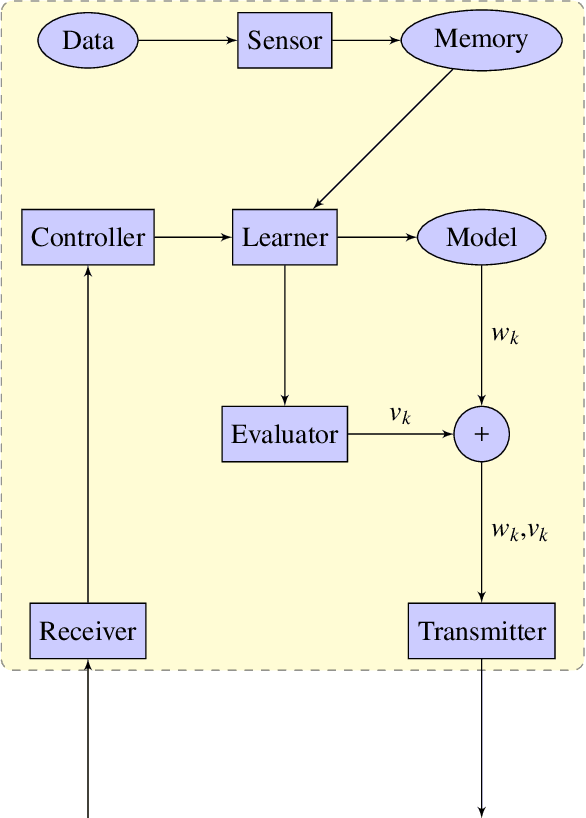
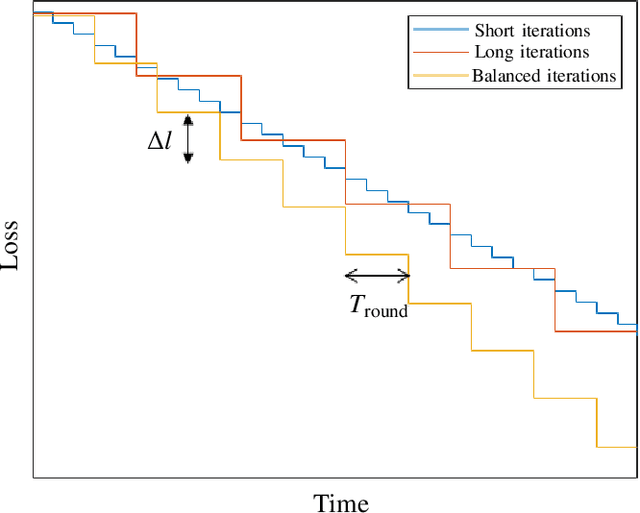
Abstract:As data generation increasingly takes place on devices without a wired connection, Machine Learning over wireless networks becomes critical. Many studies have shown that traditional wireless protocols are highly inefficient or unsustainable to support Distributed Machine Learning. This is creating the need for new wireless communication methods. In this survey, we give an exhaustive review of the state of the art wireless methods that are specifically designed to support Machine Learning services. Namely, over-the-air computation and radio resource allocation optimized for Machine Learning. In the over-the-air approach, multiple devices communicate simultaneously over the same time slot and frequency band to exploit the superposition property of wireless channels for gradient averaging over-the-air. In radio resource allocation optimized for Machine Learning, Active Learning metrics allow for data evaluation to greatly optimize the assignment of radio resources. This paper gives a comprehensive introduction to these methods, reviews the most important works, and highlights crucial open problems.
Distributed Algorithms for Feature Extraction Off-loading in Multi-Camera Visual Sensor Networks
May 15, 2017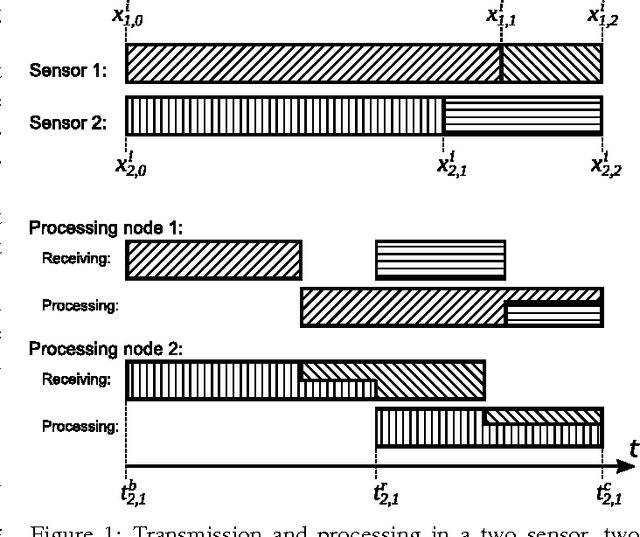
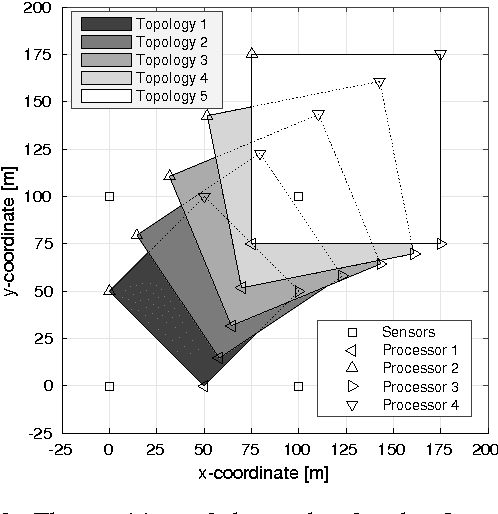
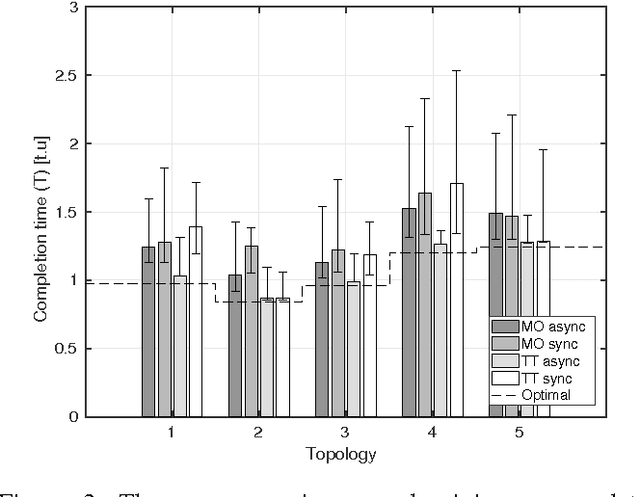
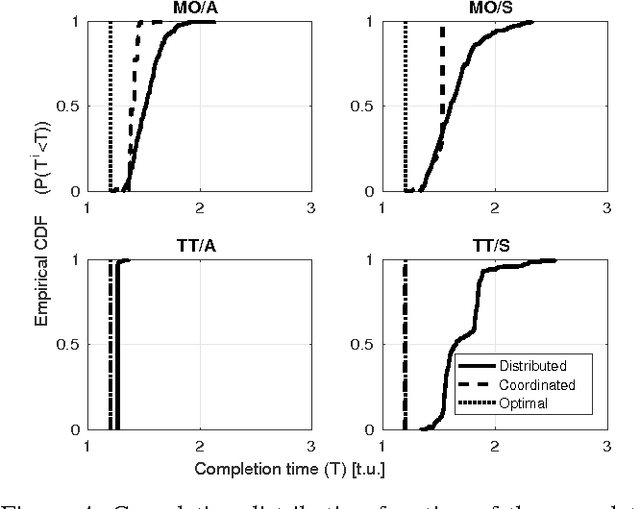
Abstract:Real-time visual analysis tasks, like tracking and recognition, require swift execution of computationally intensive algorithms. Visual sensor networks can be enabled to perform such tasks by augmenting the sensor network with processing nodes and distributing the computational burden in a way that the cameras contend for the processing nodes while trying to minimize their task completion times. In this paper, we formulate the problem of minimizing the completion time of all camera sensors as an optimization problem. We propose algorithms for fully distributed optimization, analyze the existence of equilibrium allocations, evaluate the effect of the network topology and of the video characteristics, and the benefits of central coordination. Our results demonstrate that with sufficient information available, distributed optimization can provide low completion times, moreover predictable and stable performance can be achieved with additional, sparse central coordination.
 Add to Chrome
Add to Chrome Add to Firefox
Add to Firefox Add to Edge
Add to Edge